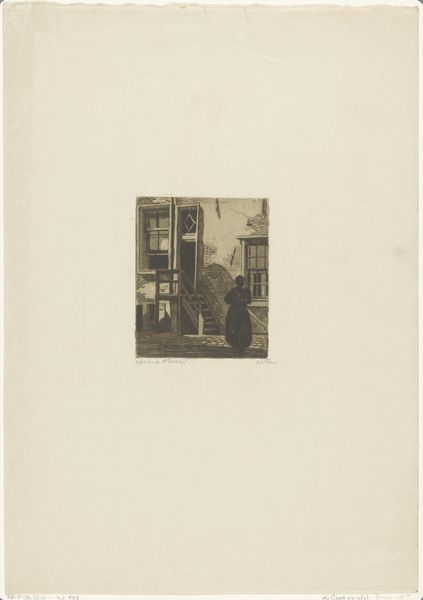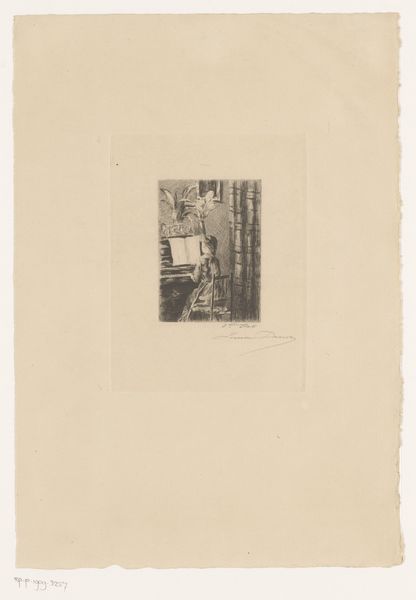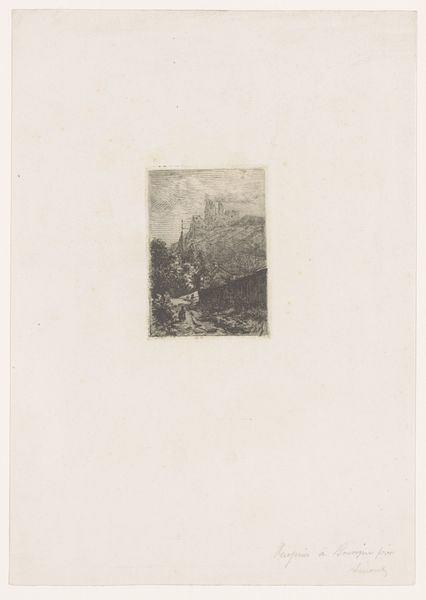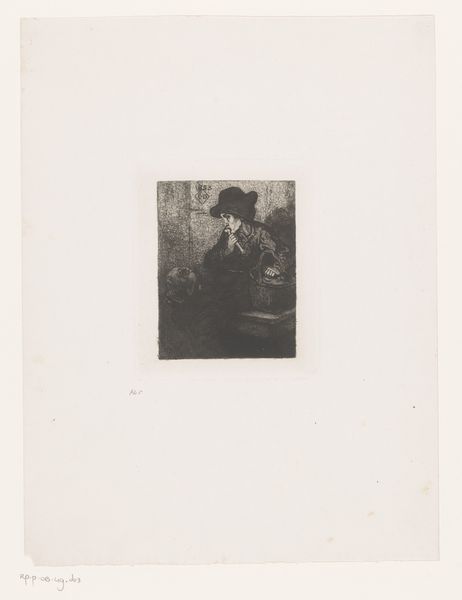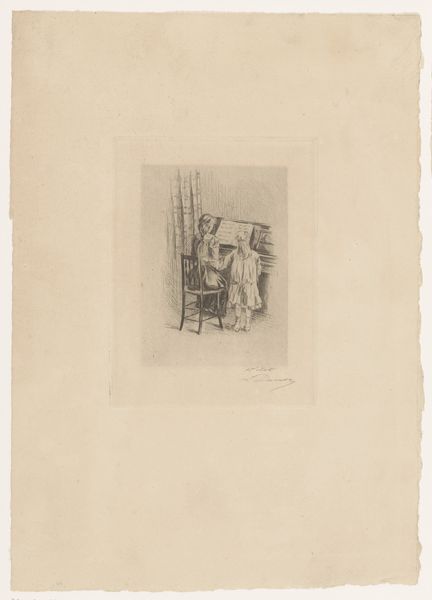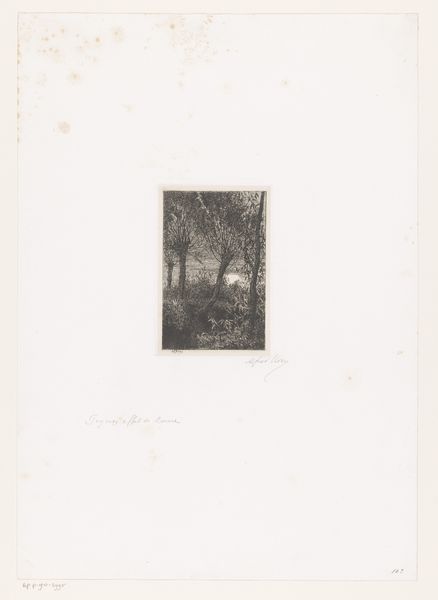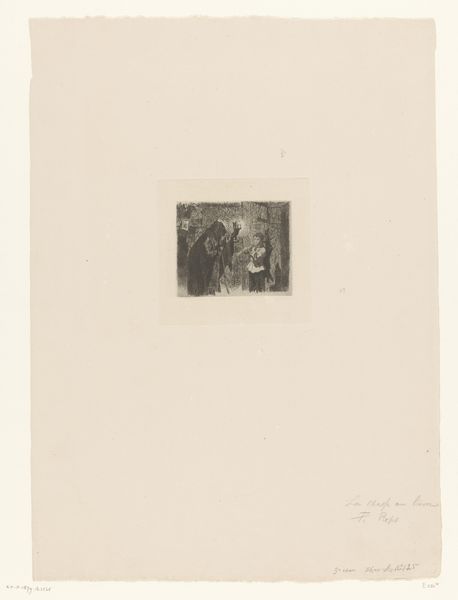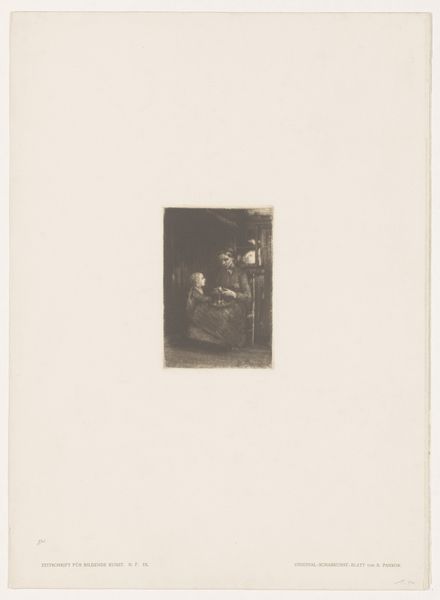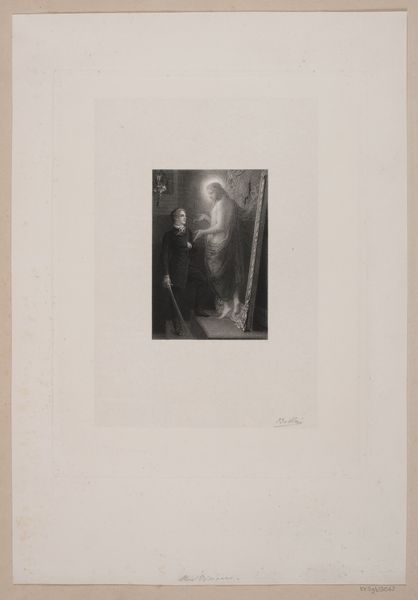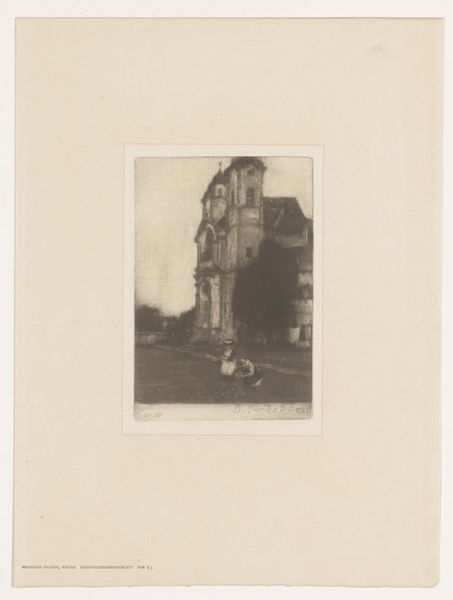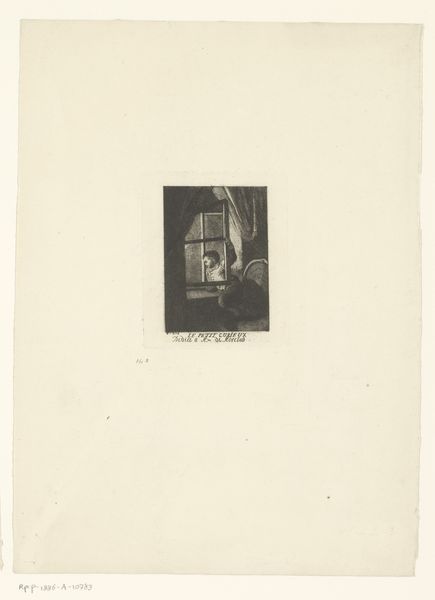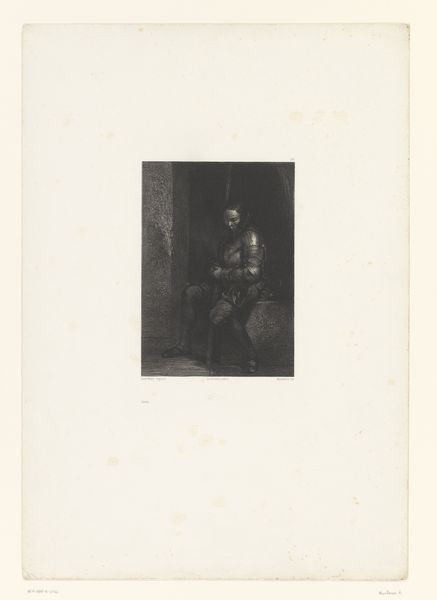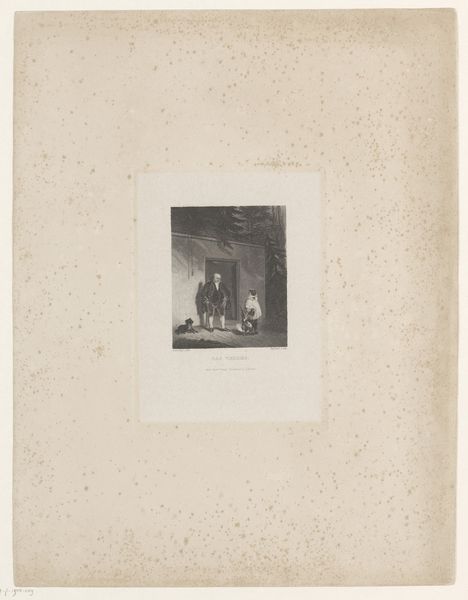
drawing, print, etching, paper, ink
#
pencil drawn
#
drawing
#
toned paper
# print
#
impressionism
#
etching
#
pencil sketch
#
paper
#
ink
#
cityscape
#
watercolor
#
monochrome
Dimensions: height 137 mm, width 99 mm
Copyright: Rijks Museum: Open Domain
Editor: Here we have Willem Witsen's "Montelbaanstoren bij avond in Amsterdam," dating from around 1887 to 1888. It’s an etching, a print, using ink, pencil, and perhaps watercolor on paper. The heavy use of monochrome gives the piece a rather somber feel. What's your read on this artwork? Curator: This image, for me, speaks volumes about the urban experience and the construction of Dutch identity at the end of the 19th century. Witsen, deeply rooted in the Amsterdam art scene, offers us a vision of the city that moves beyond simple representation. Consider the choice to depict the Montelbaanstoren at night, cloaked in shadow. Why focus on this less-celebrated view, you think? Editor: Perhaps to show the darker, less picturesque sides of urban life? Curator: Precisely. It reflects the period's growing social awareness and critical examination of the rapid changes brought about by industrialization. The impressionistic style, though subtle here, reinforces that sense of modernity – a move away from romantic idealizations toward capturing fleeting moments, much like the fleeting stability in a society undergoing significant transformations. The dominance of dark hues emphasizes the sense of alienation, the oppressive weight of the city, particularly poignant given Amsterdam's colonial history and its reliance on exploitative global trade networks during this era. Can you see any connection there? Editor: Now that you mention it, the darkness could symbolize a reckoning with the shadows of its past prosperity. The tower, imposing yet blurred, feels almost like a ghost of that past. Curator: Exactly. By juxtaposing aesthetic beauty with these nuanced layers of critique, Witsen prompts us to reflect on our relationship with history, urban spaces, and the sociopolitical narratives embedded within them. Editor: This has given me much to consider. I'll definitely look at Witsen and other Impressionists with a sharper perspective now! Curator: Indeed. Art like this functions as an entryway, pushing us to question not just what we see, but *how* and *why* we see it that way.
Comments
No comments
Be the first to comment and join the conversation on the ultimate creative platform.
